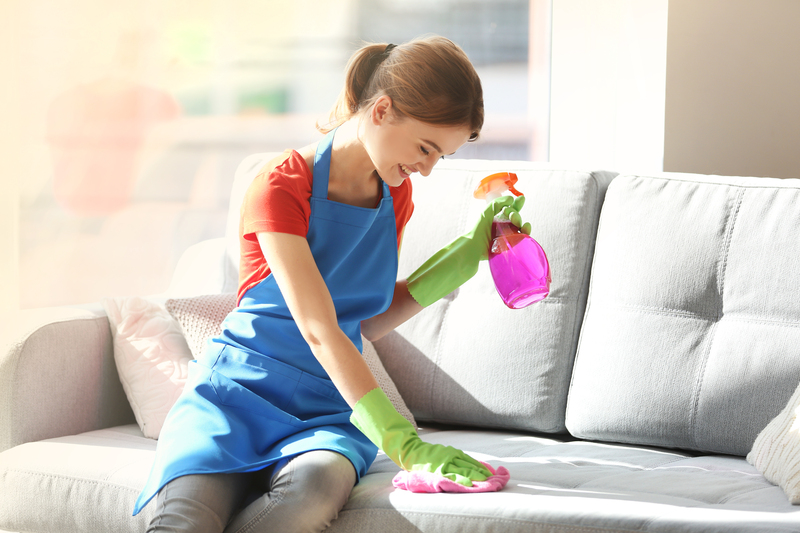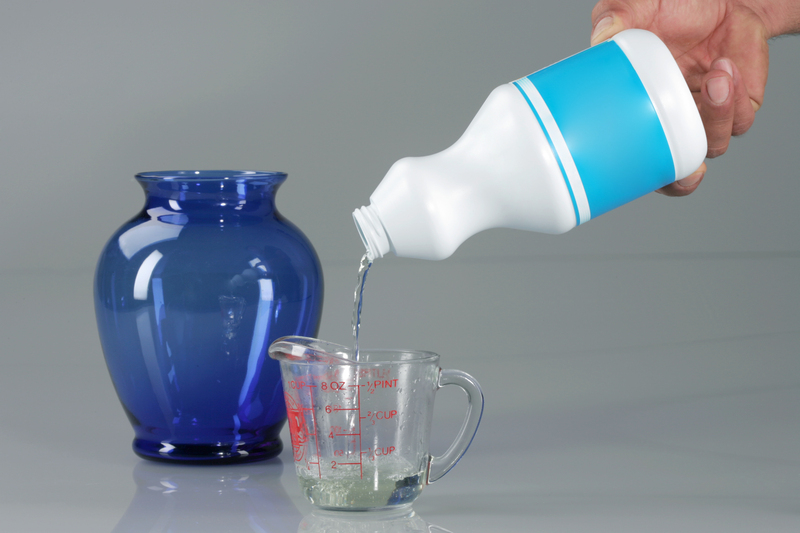Equip Yourself with Techniques for a Burn-Free Stovetop
Posted on 30/06/2025
Equip Yourself with Techniques for a Burn-Free Stovetop
Embarking on a culinary journey at home is a delightful experience, but nothing ruins that peaceful cooking session faster than a burned stovetop. From stubborn scorch marks to persistent stains, a burned stovetop not only looks unsightly but can affect the taste and safety of your meals. If you want to equip yourself with techniques for a burn-free stovetop, you've come to the right place. This comprehensive guide covers everything from preventative measures to cleaning hacks, ensuring your stovetop remains spotless and functional. Dive into these tips and transform the way you care for your cooking space!

Understanding Why Stovetops Get Burned
To efficiently maintain a burn-free stovetop, it's essential to understand what causes burns and stains in the first place. Common culprits include:
- Spilled food: Boiling liquids, bubbling sauces, and oil splatters quickly burn when they land on hot burners, creating stubborn residue.
- High heat settings: Constant cooking on high heat can leave lasting discoloration, especially on glass and ceramic stovetops.
- Pots and pans left unattended: Forgetting to stir or remove items on time often leads to overflows and scorch marks.
- Improper cookware: Using pans with warped bottoms creates hotspots, increasing the risk of burning both food and the surface below.
- Ineffective cleaning habits: Neglect and procrastination make it harder to remove burned-on messes later.
Now that you're aware of the causes, let's dive into the proven techniques to equip yourself with a burn-free stovetop cooking experience.
Prevention: Your First Line of Defense
Mise en Place and Preparation
Mise en place - a French culinary term meaning 'everything in its place' - is the golden rule in the kitchen. Before turning on your stovetop, ensure all your ingredients, utensils, and cookware are within reach. With better prep, you're less likely to spill, overfill, or burn anything.
- Keep countertops clear: Reduce clutter to minimize accidents and distractions.
- Read the recipe thoroughly: Understand the steps and required temperatures.
- Measure ahead: Have your oils, sauces, and spices pre-measured to avoid last-second scrambling.
Use the Right Cookware
To ensure a burn-free stovetop surface, invest in high-quality, flat-bottomed pots and pans. Warped cookware can leave hot spots or tip, causing dangerous spills. Additionally, match pot size to burner size; an oversized pot on a small burner won't heat evenly, while a small pot on a large flame invites spillovers and scorches.
- Choose nonstick and heavy-bottomed pans: These distribute heat more evenly and reduce sticking.
- Avoid using abrasively scratched pots: Older pans with damaged surfaces may stick more easily, leading to burned-on foods.
Monitor Temperature Settings
Resist the urge to cook everything on high heat. Most meals develop flavors better on medium or low settings, decreasing the risk of scorching the stove or your meals. Start at a lower temperature and dial up as needed, especially when working with sugary ingredients prone to burning.
Active Cooking: Staying Vigilant
Never Leave the Stove Unattended
One of the most effective ways to maintain a burn-free stovetop is to stay present and alert while cooking. Step away only when absolutely necessary, and always turn burners off if you must leave the kitchen.
- Use timers: Set multiple alarms as reminders to check your food and prevent overcooking.
- Stir frequently: This prevents sticking and distributes heat evenly.
Control Oil and Liquids
Oil spatters harden and burn on stovetops, while liquids bubbling over can create caked-on residue. Protect your stove by:
- Using splatter screens: These catch droplets before they reach the surface.
- Watching liquid levels: Don't overfill pots, and reduce heat if bubbles rise too high.
- Wiping spills instantly (when safe): A paper towel or kitchen cloth can quickly mop up minor spills before they burn; just be cautious around open flames.
Cleaning Techniques for a Burn-Free Stovetop
Immediate Post-Cooking Wipe Down
The simplest path to a pristine stovetop is cleaning up immediately after use. Once burners cool enough to safely touch, wipe the surface with a damp microfiber cloth or sponge. For glass tops, use a dedicated stovetop cleaner. For coil or gas stoves, remove grates and clean underneath.
- Paper towels for minor splatters: Quick action eliminates most stains.
- Vinegar and water spray: Cuts through grease and leaves a shiny finish.
Deep Cleaning for Stubborn Burns
If you occasionally miss a spill, don't panic! You can still restore your stovetop with these deep-cleaning strategies:
- Baking soda paste: Mix baking soda and water to create a thick paste. Spread it on stained areas, let sit for 15-30 minutes, then scrub gently with a non-scratch pad. This lifts most burned-on messes.
- White vinegar soak: For stuck-on food, drizzle white vinegar and let it fizz. Wipe away residue once the reaction subsides.
- Razor blade (for glass tops only): Carefully run a razor blade at a shallow angle to lift baked-on stains. Only use this method on manufacturer-approved surfaces!
- Specialized cleaners: Cerama Bryte or similar stovetop cleaners work wonders for glass and ceramic surfaces.
*Always spot test cleaners and avoid harsh abrasives to prevent scratching.*
Best Practices for Gas, Electric, and Induction
Gas Stovetops
- Remove and clean grates: Submerge them in hot, soapy water and scrub away grease regularly.
- Wipe burner caps: Soak and use a brush to eject clogs and stains.
- Check burner ports: Clear any debris with a pin for optimal flame and minimal soot.
Electric Coil Cooktops
- Lift coils: When cool, carefully unplug and wipe with a damp cloth. Never submerge in water.
- Clean drip pans: Remove, soak, and scrub off burned food or replace as needed.
Glass and Induction Stovetops
- Wipe with microfiber: Prevent scratches and maintain the reflective finish.
- Use stovetop polish: Apply polish occasionally for a sparkling, streak-free surface.
- Avoid heavy cookware drops: These can crack glass and worsen burn marks.
Homemade vs. Commercial Cleaners: What's Best?
The debate between natural and store-bought cleaning products rages on, but both have their place in achieving a burn-free stovetop. Let's compare:
Homemade Cleaners (Baking Soda, Vinegar, Lemon)
- Pros: Non-toxic, inexpensive, effective for most stains, environmentally friendly.
- Cons: May require more elbow grease, less effective on extremely stubborn burns.
Commercial Cleaners (Ceramic, Enamel, Stainless Steel)
- Pros: Designed for specific surfaces, quick action, polishes and protects.
- Cons: Can contain chemicals, higher cost, not always suitable for all surfaces.
Tip: Combine both: use homemade solutions for daily wipes, and commercial products for tough stains and monthly deep cleans.
Extra Protective Measures for a Spotless Stovetop
Silicone Burner Covers and Mats
Consider silicone mats or removable burner covers for gas and electric stoves. These catch drips and can be lifted and cleaned separately, preventing direct burning on your appliance.
Regular Maintenance Checks
- Inspect burners and drip pans weekly: Clean or replace faulty components to maintain efficient, even heat.
- Check for cracks and chips: Address damage immediately to prevent burn hazards.
When to Seek Professional Help
If you've tried every technique and your stovetop still has burn marks or is functioning inefficiently, it may be time for professional help. Appliance repair services can safely restore surfaces and repair internal components, extending the life of your stove.

Quick Reference: Stovetop Burn Prevention Checklist
- Read recipes and prepare in advance
- Always match pot and burner size
- Monitor heat settings and avoid high heat when possible
- Clean spills immediately after (if safe)
- Deep clean weekly with appropriate cleaners
- Use splatter guards, silicone mats, and nonstick cookware
- Replace old and warped cookware regularly
Conclusion: Achieving a Burn-Free Stovetop is Within Reach
Maintaining a burn-free stovetop is entirely possible with the right techniques and a bit of dedication. Frequent cleaning, careful attention during cooking, and proper tools will keep your stovetop looking and functioning like new. Whether you prefer glass, gas, electric, or induction, simple habits--like wiping spills quickly and deep cleaning routinely--make a world of difference.
Equip yourself with these stovetop protection strategies, and enjoy hassle-free, delicious cooking every time! Not only will your kitchen look better, but you'll cook safer and extend the lifespan of one of your home's essential appliances.




